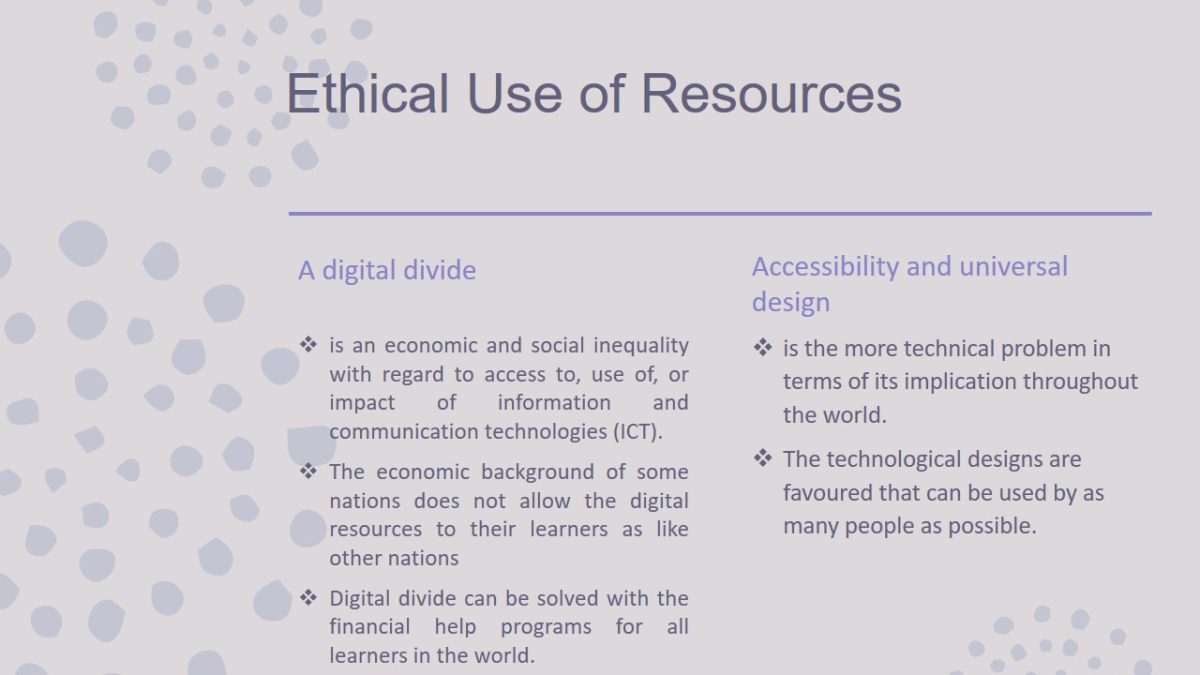- Technological Resources
- Appropriate Resources
- The Difference Between Resources in Design and Utilization
- Technological Resources and Early Identity Formation
- The History of Incorporation of Technological Resources in Education
- Tools, materials and devices as Resources
- Setting as Resources
- People as Resources
- Ethical Use of Resources
Technological Resources
- Tools, materials, settings, devices and people are all technological resources.
- Natural or politic resources do not fit in this definition.
Because they cannot be utilized as educational technology.
Another concept that must be focused while talking about technological resources is.
Technological resources are different from other kinds of resources in their ability to be utilized as the form of educational technology.

Appropriate Resources
- Technological resources were not used very commonly because there were issues about their appropriate usage in the education.
- Suitability and compatibility of the technological resources including hardware and software have always been the main concerns before the adaptation of a particular type of technology.
- Standards have been creating in the ethical code by the Association for educational communications and technology (Aect) for guiding the use of technological resources.
Hardware and software have always been the main concerns before the adaptation of a particular type of technology.
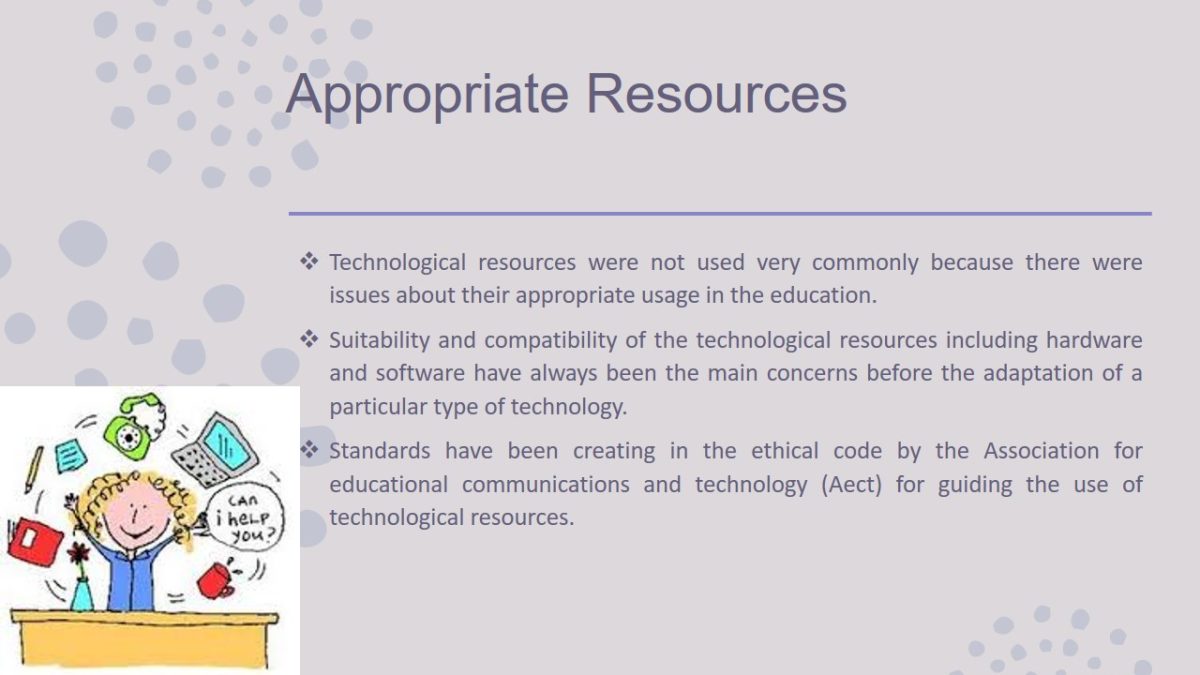
The Difference Between Resources in Design and Utilization
- According to the authors of 1972 definition statement (AECT), there are two types of resources in educational technology.
- Instructional material resources are especially designed for the educational purposes.
- The real-world resources that can be used for educational purposes but are designed for the general use.

Technological Resources and Early Identity Formation
- Before the implementation of technological resources in the field of education, the educational institutes were identified with the presence of traditional resources like chalkboard, textbooks and teachers.
- During 19th century and afterwards, various technological tools were incorporated in educational setups to enhance the productivity and educational outcome, which is the success in learning.
The history of incorporation of technological resources in education can be divided into five stages.
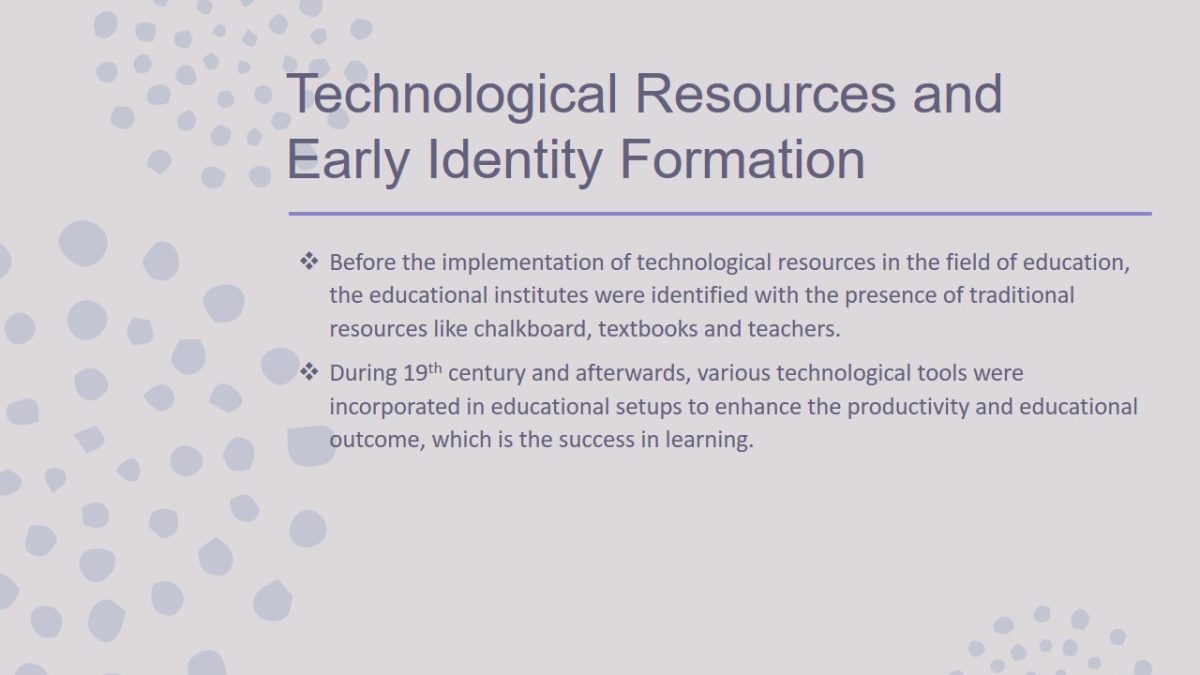
The History of Incorporation of Technological Resources in Education
Divided into Five Stages:
- Early Origins.
- The visual Instructions Movement.
- Audio-Visual instruction.
- Education communication and technology.
- Views on educational technology as resource driven.

Early Origins
- During mid-1600s, the incorporation of images and illustration has been considered as the first stage of incorporation of technological resources.
- One example is the works of Comenius in this regard. Comenius was the innovator who the first introduced pictorial textbooks.
- However, some scholars argue that Comenius was not an educational technologist and should not be considered as the founder of educational technology.
Comenius was the innovator who first introduced pictorial textbooks.
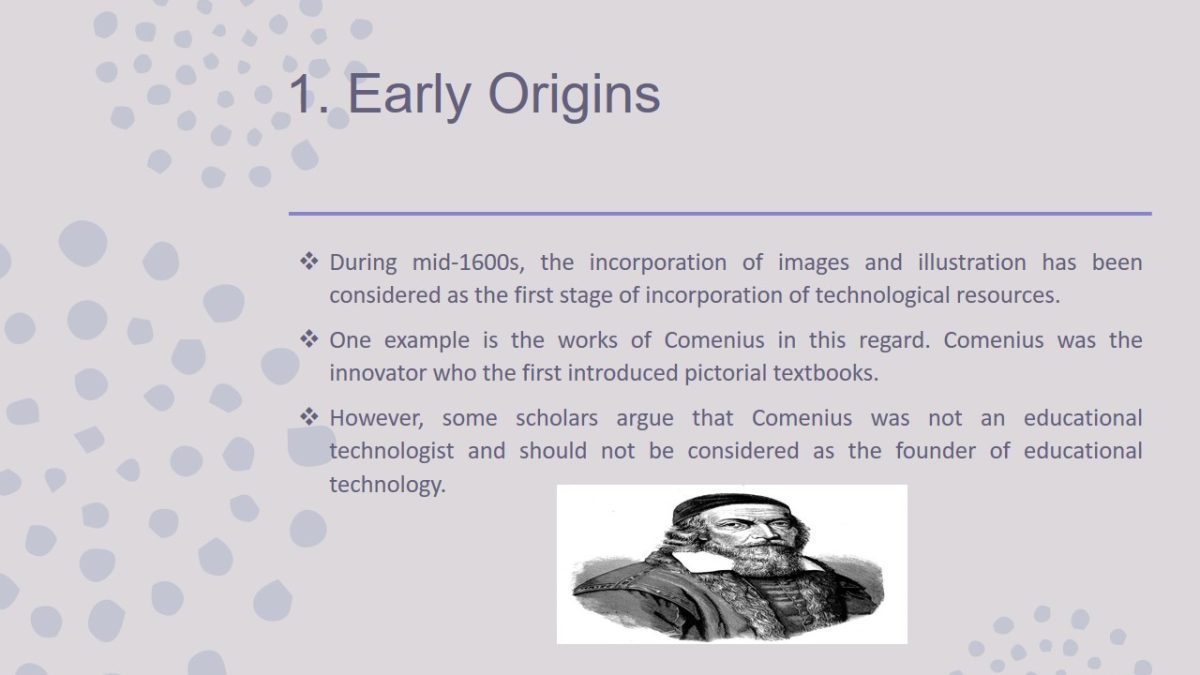
The Visual Instructions Movement
- Slides and silent films were used in this moment during late 18th and early 19th centuries.
- Early forms of slide projector were created by the help of the magic lantern.
- The use of Still and Motion Pictures is the main component of visual instruction movement.
- French and British film makers used silent films to create interesting educational material like microscopic organisms and underwater scenes, which were not used exclusively for educational purposes. It was used for entertainment.
- In 1923, a professional association named as the Department of Visual Instruction (DVI) was formed for dealing with the concerns of using Still and Motion films in education.
This lantern was first used for entertainment purposes but then they were adopted by the field of education.
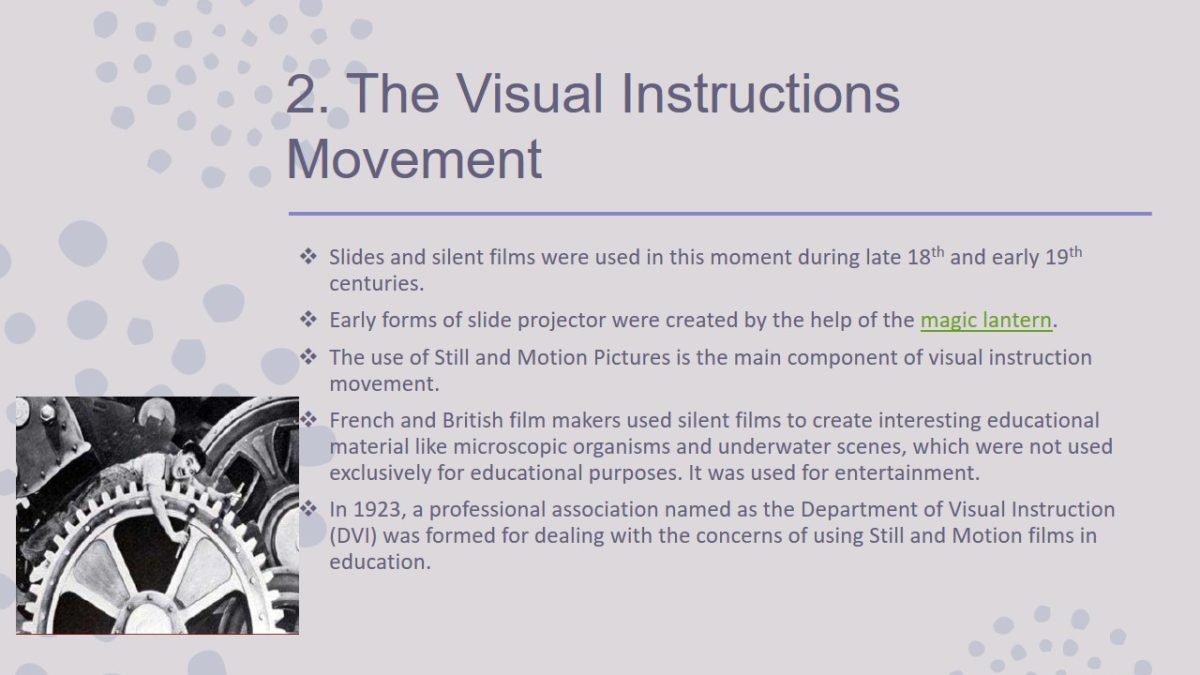
Audio-Visual instruction
- Sound recording and films along with radio and other audio-visual media became the common components in instruction during late 19th century.
- Magnetic tapes and phonographs were among the first media to record instructional sounds to be used by students later for recalling the lecture.
- Sound films got incorporated into instructional material during late 1920s but they did not get enough attention due to their possible unformatted use as educational technology.
- Radio stations were first allowed in the campuses for the students of electrical engineering. It was incorporated for the practical purposes only.
- In 1947, the Department of Audiovisual Instruction (DAVI) was formed for the management of this technology.
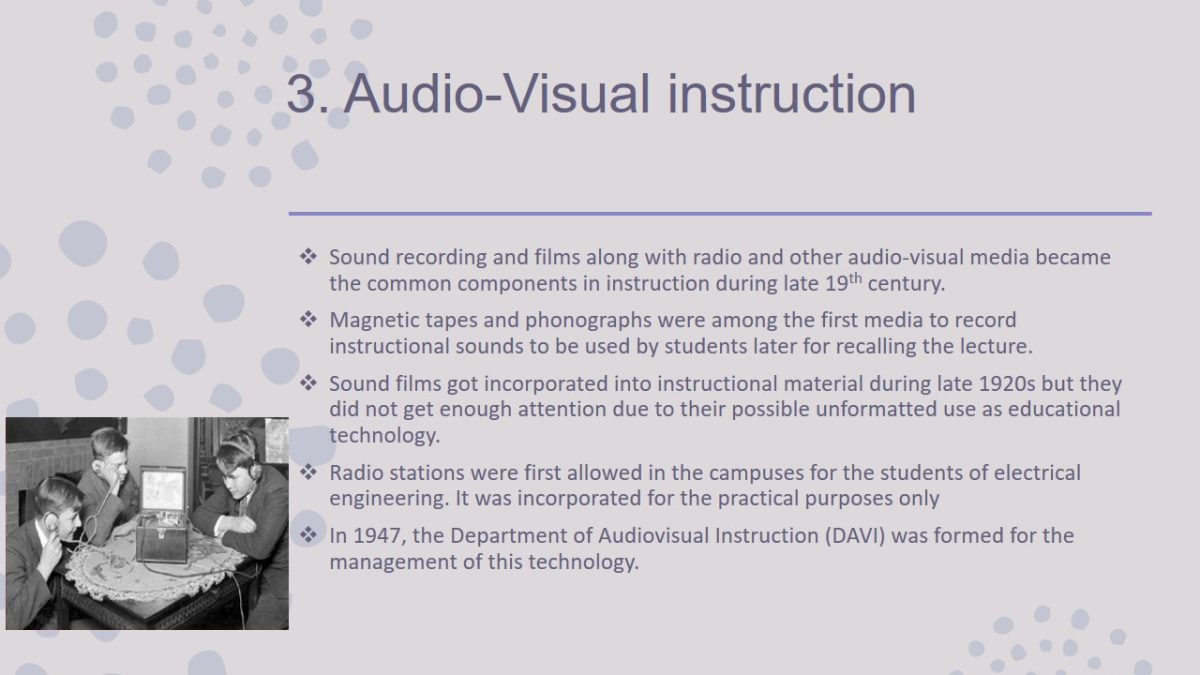
Education Communication and Technology
- The invention of television, computers and communication technologies or information technologies is the heart of modern educational technology.
- All such technologies were developed for general purposes but their applications in the field of education are undeniable.
- After World War II, the incorporation of digital media in educational technology became the necessity to support the theme of education.
- AV and baby booms were the early technological resources in this regard.
- Educational television programs were created in 1950s. It has been argued that television would provide sources for the poor children to get fundamental education.
- Television was seen as the resources that could have replaced teachers and other traditional educational resources like textbooks and chalkboards.
After the success of AV and television as the instructional material, DAVI got converted into AECT. Different national and international communities, which were dealing with the educational concerns, agreed that communication technology is the fundamental for instructional materials. In late 1960, the term, ‘educational technology,’ got officially poplar for the description of an entire new field of education.
Instructional became the main concern of AECT within a very short time span. Computer and its various component like CD-ROMS and DVDs in late 1990s. The impact of information technology along with digital technologies revolutionized modern educational technology. AECT has encouraged computer usage in classrooms.
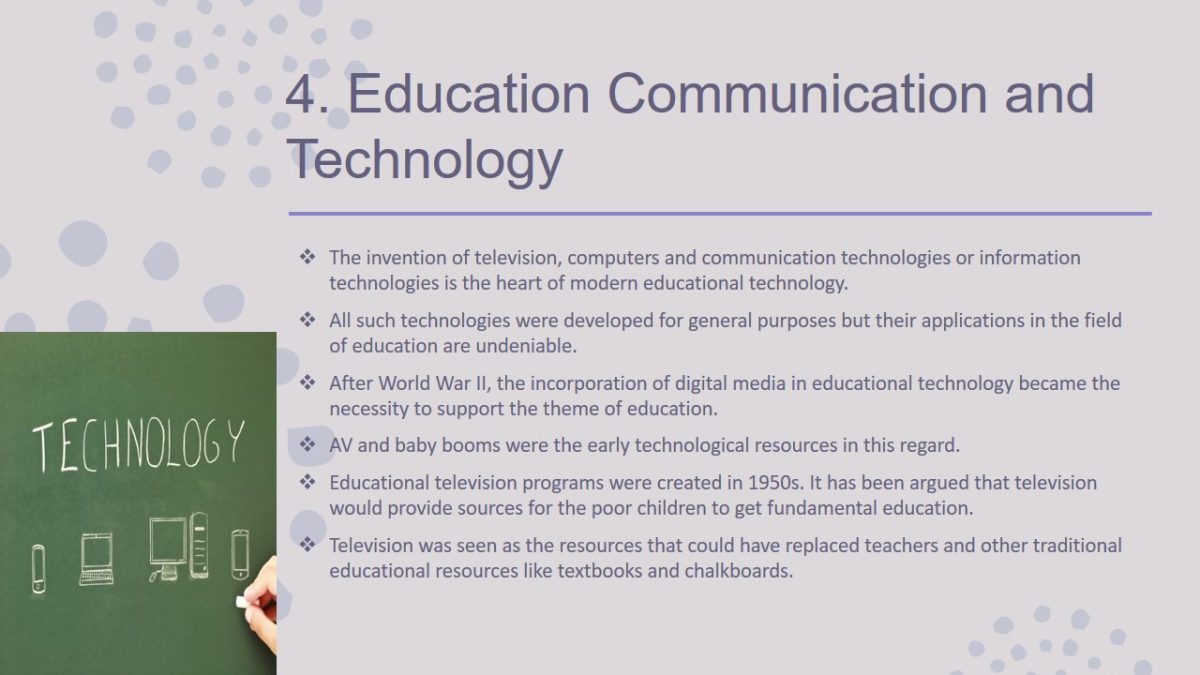
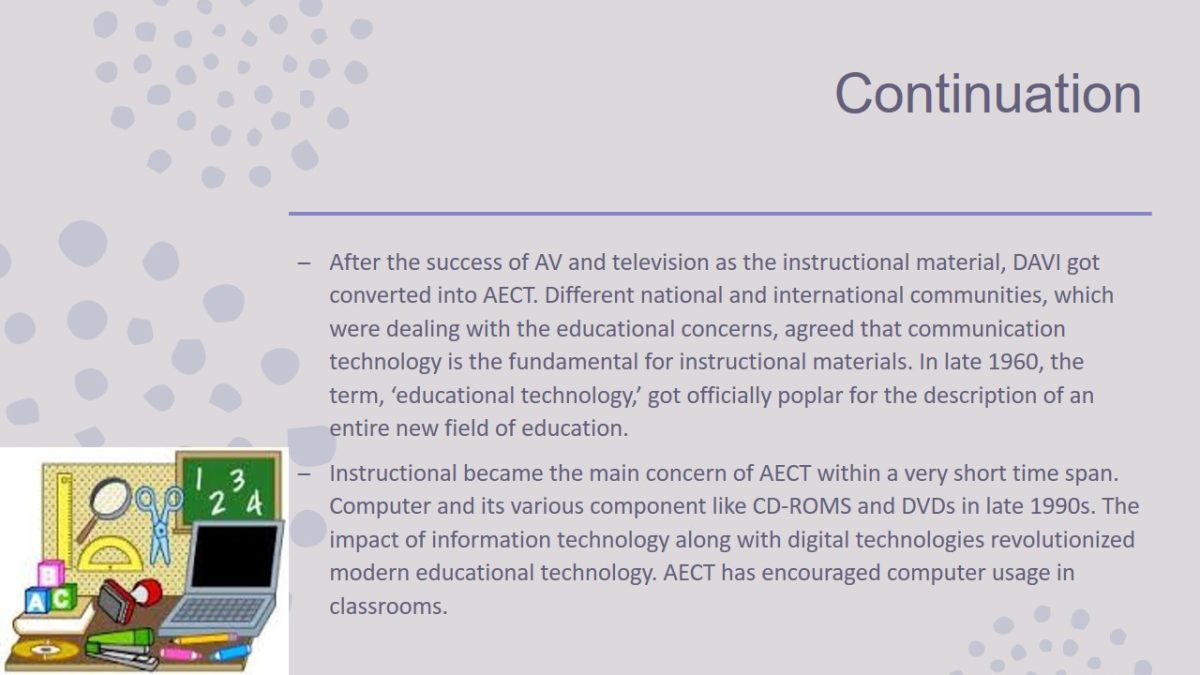
Views on Educational Technology as Resource Driven
- The use of technological resources has always been a hot topic for discussion in the gatherings of education scholars because of the possible applications and risks that are associated with such usage.
- International Technology Education Association (ITEA) has defined technological resources as the means to optimize and enhance teaching and learning.
- Many of the educational scholars have also defined technological resources in broader sense than of educational applications.

Tools, materials and devices as Resources
- Basic computer tools like hardware and software are used for the creation of instructional material that was, then, saved or stored on the digital media like CDs and DVDs, which were then accessed with the help of devices like CD-ROM, VCR and DVD players.
- The difference between tools, materials and devices is in the same resources but have different types of usage in their applications. All these resources are used for one common purpose, which is the instruction through technology.
- These resources can be divided into analog or digital in terms of their relative meanings and applications in the education.
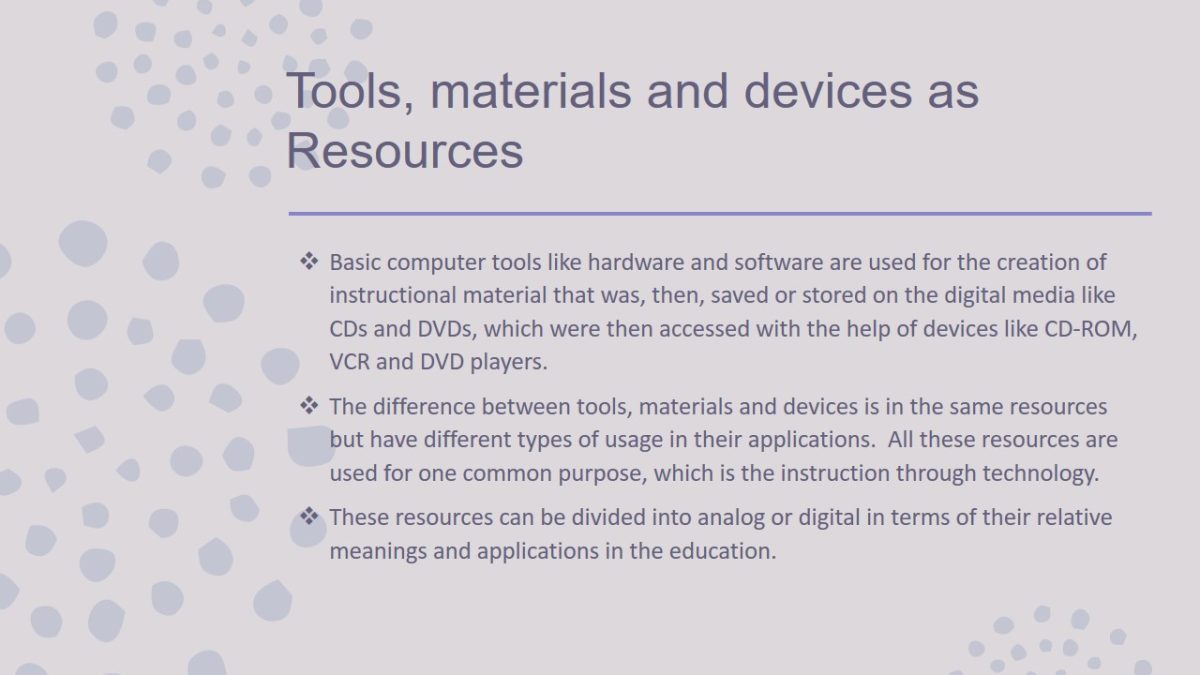
Analog Resources
- All kinds of AV media that is not developed with the help of computer or does not have computer as their interface are called analog media.
- Examples of analog media are audiocassettes, film strips, slides and various others. The term analogy refers to the objet or idea that is point of reference for another object or idea. It can be said that analogy is the creation of same images in the appearance.
- A common belief among the users of today’s technological resources is that digital resources like CDs and DVDs are descendants of AV media because they hold the same kind of information but have greater capacity or space.
- This concept is technologically not correct because analog media uses different types of technology to cast out the recorded audio and images.
As the interface between the digital and the real world.
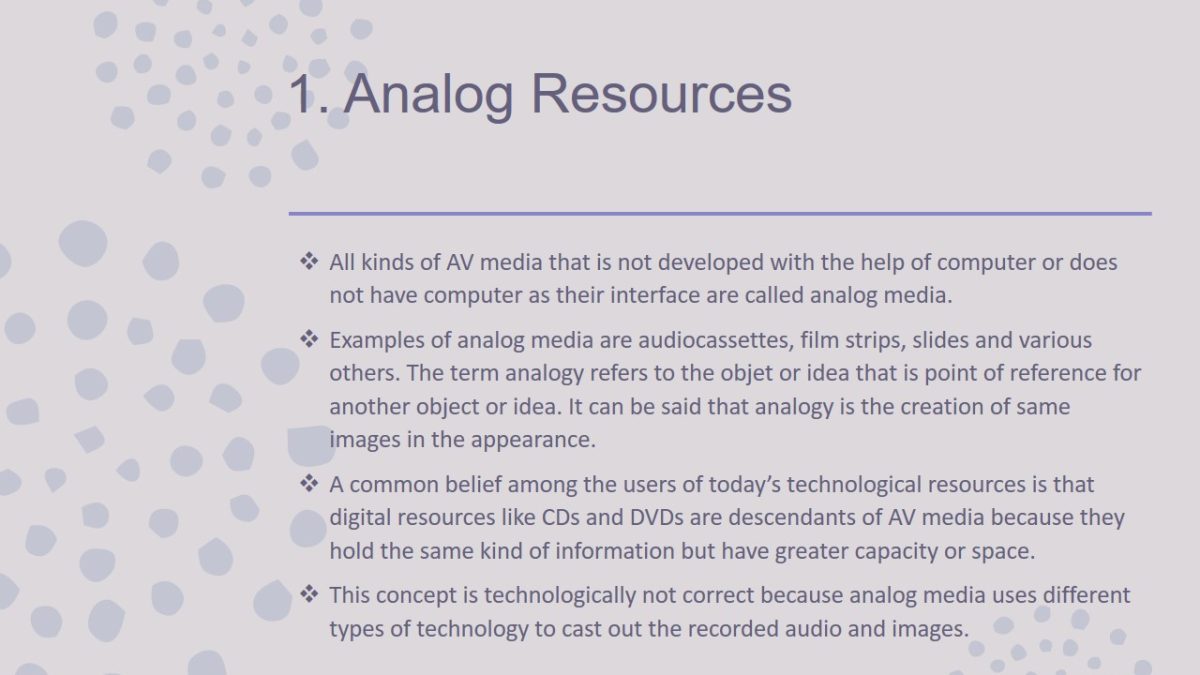
Digital resources
- Digital media elements are stored and transmitted with the help of binary codes.
- The message, whether it is audio or video, is firstly got converted into binary codes and then got recorded in the digital material.
- These binary codes were then translated into the given form with the help of digital devices. Computer displays, CDs, DVDs, video games, and web pages are some typical formats of digital media.
- These technologies are replacing AV technologies because they have greater capacities, high speeds, and multiple functions along with many other applications.
- The computer is the main device for the development and management of other digital resources since it compatible with many storage devises such as CDs, DVDs, USB disk, and hard disk. Thus, societal trend has been shifted massively toward the use of computers and other digital devises.
- Secondly, the internet and World Wide Webwere have become instrumental digital resources for uploading and downloading series of education materials.
- Generally, such digital technologies are the implementation of digital media for more sophisticated teaching and learning experiences. Kindly check my video which summarizes the chapter.
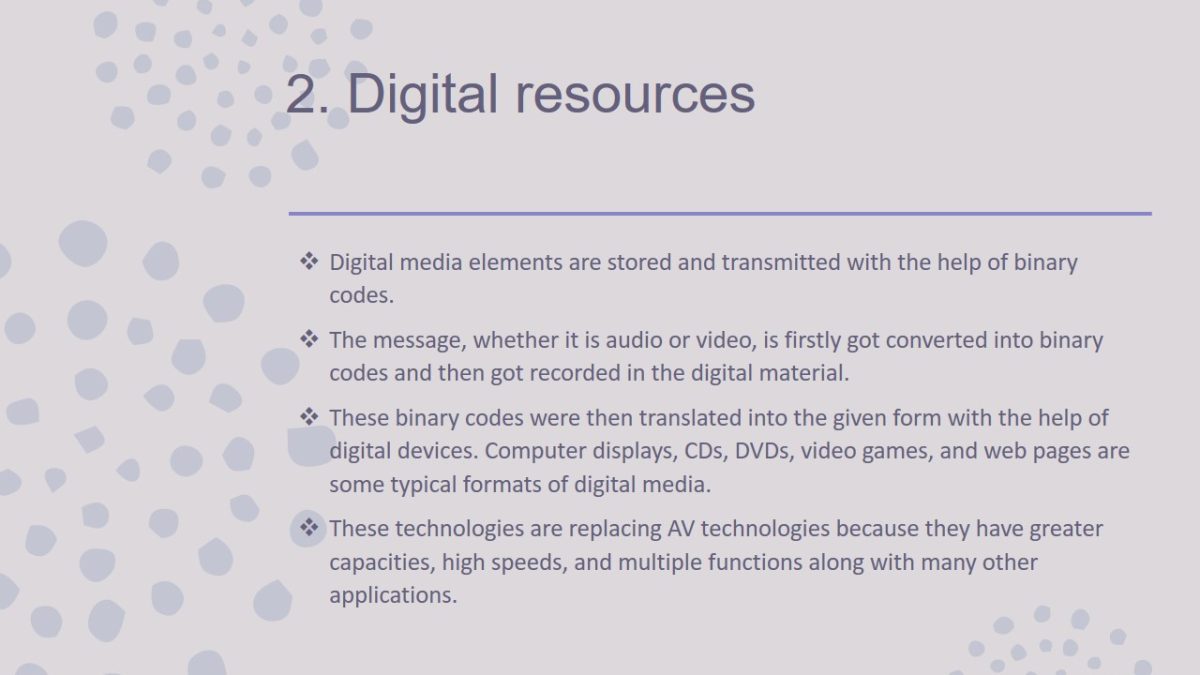
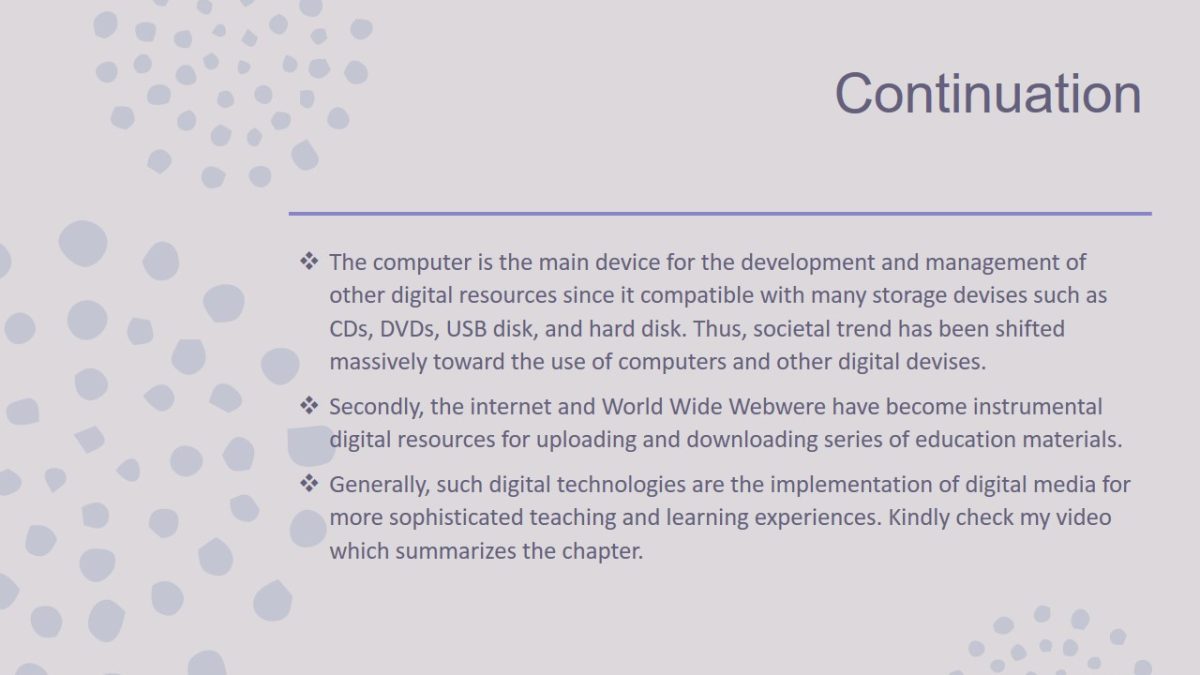
Setting as Resources
- The evolution of instructional design demands flexible changes, which are only gained by internal and external settings .
- The internal settings are the changes inside the instructional rooms like classrooms, and laboratories.
- The external settings are those which are outside the instructional localities but they play important part in the educational outcomes.
A good instructional design holds two main components for its effective implementation.
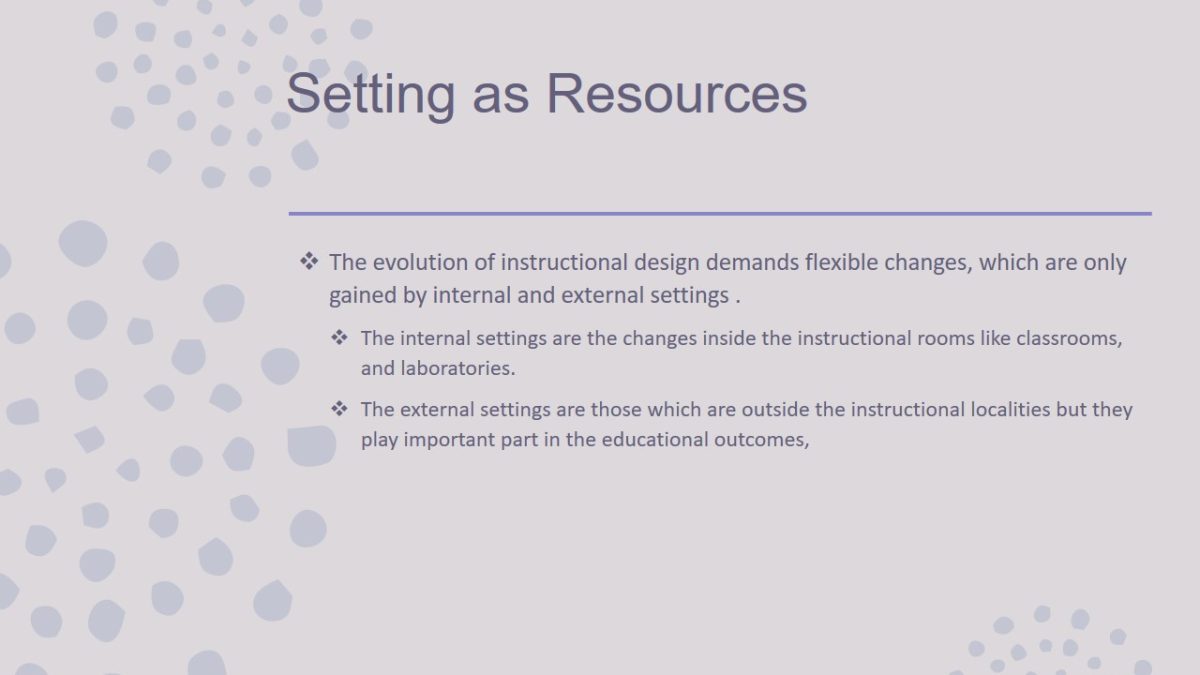
People as Resources
- The educational technologists experts:
- The resources by design
- They help in the management of information about educational of the institute.
- They are hired professionally for their jobs and have specialized educational backgrounds for them
- The subject experts:
- The resources by utilization
- These people are doing their unique jobs in their specific subject
- They are hired to help in the teaching.
The first type is the educational technologists or experts who can help in the effective teaching strategies.
The second type is the subject experts like doctors, engineers and scientists who can help in their subjects.
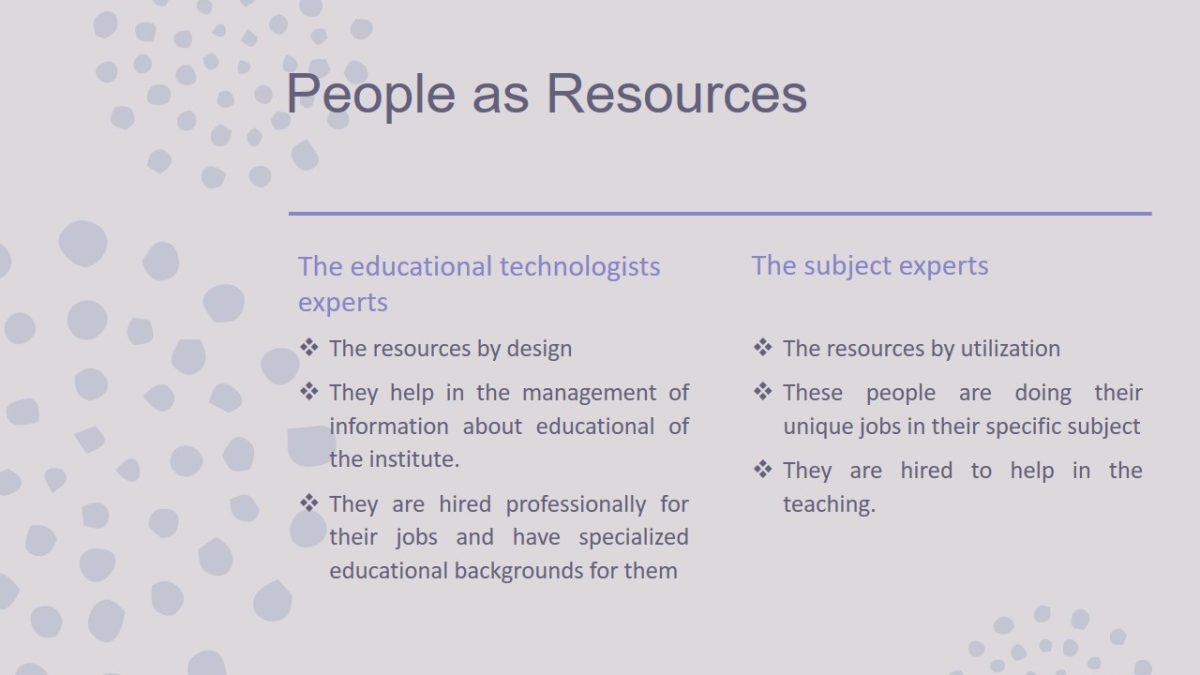
Ethical Use of Resources
- A digital divide:
- is an economic and social inequality with regard to access to, use of, or impact of information and communication technologies (ICT).
- The economic background of some nations does not allow the digital resources to their learners as like other nations
- Digital divide can be solved with the financial help programs for all learners in the world.
- Accessibility and universal design:
- is the more technical problem in terms of its implication throughout the world.
- The technological designs are favoured that can be used by as many people as possible.
There are two major ethical concerns behind the proper development, management and usage of technological resources.
The first ethical concern is the equal distribution of digital resources among the learners of all nations in the world.
